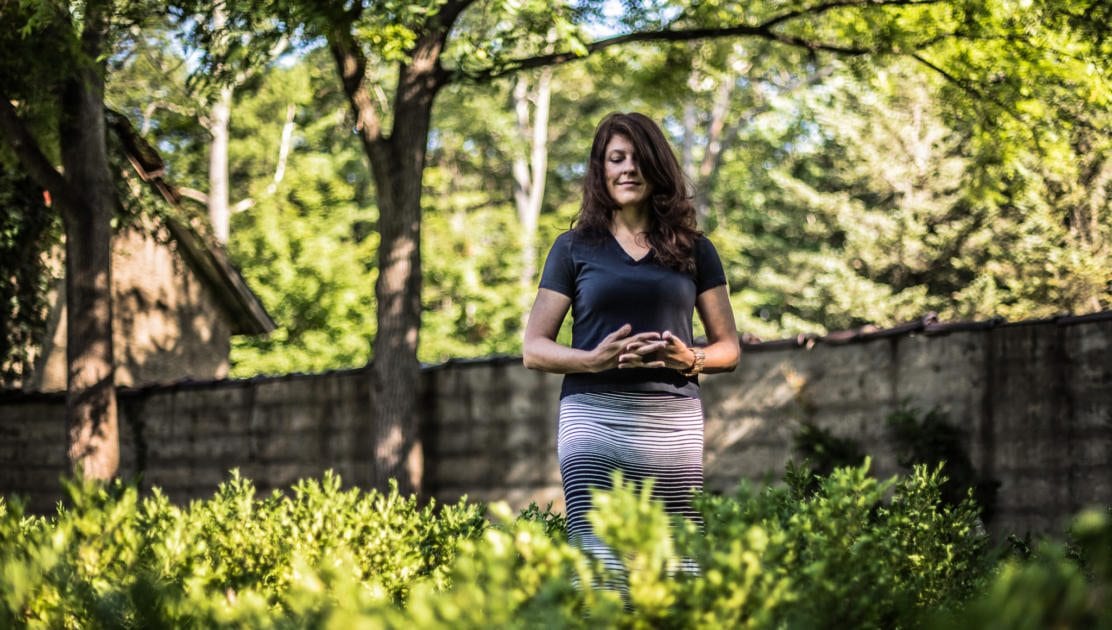Learn to Meditate During the Spring Equinox
By Jane KolleenyLeading up to the “Practice Mindfulness on the Spring Equinox” retreat at the Garrison Institute on March 23-25, 2018, Jane Kolleeny discusses the basics of mindfulness meditation.
Join us at our Spring Equinox retreat where we will embark on an inward bound journey of cultivating simplicity and paring down outside stimulation in order to examine ourselves and our lives more closely. We will deliberately subject ourselves to a rigorous schedule, simple accommodations and food, allowing for abundant time for contemplation and periods of silence to impact our sensibilities. When we do this, another layer of ourselves can emerge and we may see ourselves in a new light, one that’s been there all along but is often camouflaged by distractions.
We all need to stabilize our wandering minds. Many studies have shown that most people spend about half their waking hours thinking about something other than what they’re doing. The wandering mind can make us feel out of synch with our bodies and minds, inaccurate in our perception, and ill at ease in our experience. By focusing on an object, we begin to build a capacity to attend fully to what’s in front of us, as it is, for better or worse, without feeling the need to escape or strive for stillness. The steadiness and attention we cultivate during meditation allows us to witness who and what we are, which results in making friends with ourselves, seeing our shortcomings and strengths, and a more accurate acceptance of who and what we are.
When we practice meditation we become aware of our minds in new ways. Using the breath as a tethering pole for our attention, the mind watches itself. It seems strange that the mind could watch itself but interestingly it has this capacity to both observe and participate. We witness a proliferation of things including a world of conflicting agendas, which are often very difficult to ascertain. For example, we tell ourselves to act to protect our security, while another part of us says to take risks. These conflicts occur at work, in relationships, while driving, communicating, and so on.
During meditation, we try to be quiet with ourselves but may instead find eruptions of agitation and anxiety, followed by sleepiness and boredom or a moment of peace and elation. We are surprised that we don’t immediately find harmony. We are engaged in a balancing act that is actually how we survive, because we are always assessing the risk/reward ratio.
To make a decision requires listening to, considering, and sometimes overriding some of our ingrained agendas. As we know, actions have consequences, so this apex of decision-making presents a great opportunity to develop a deliberate attention into what actions lead to positive or negative consequences. Ascertaining this requires a degree of impartiality, something that the practice of meditation can be very helpful in cultivating.
Through mindfulness practice, we cultivate the abilities of the watcher, the element of mind that attempts to step out of the fray of autopilot reactivity. We utilize the breath as our focus, our home base, but it’s the watcher which takes note of the breath. With the benefit of distance, keeping an equilibrium becomes more workable. While thoughts may convey a disrupted state of mind, we can develop a distance from that murky and confused place by lifting our awareness away from it and not identifying with it. Having perspective that is removed but involved can help us evaluate and unpack the conflicting agendas that present themselves in life. The watcher functions as a person at the theater, while also being in the play. You can see yourself in the play of life and hopefully get a better command over your role. The watcher is not a mechanical narrow-minded judge, but rather weighs perception with an open and gentle regard.
The philosopher and spiritual teacher Krishnamurti once said observation without judgement is the highest form of intelligence. We often think observation implies judgment but they are separate. Observation involves open monitoring, which is the role of the watcher. Analyzing, judging, and labeling is compartmentalizing that information, an additional step, which can limit or cloud our understanding. Open monitoring is taking an inventory without deciding for or against. Adding judgement becomes an expression of self-centeredness.
The watcher is a metaphor constructed by us to get us to pay attention to our thoughts, feelings, and behaviors. Our intellect wreaks havoc and runs amok when it goes unchecked and unobserved. The watcher develops a kind of seeing where a person can see what’s happening from the wider perspective, not the granular, so that we can see the stories that the mind attaches to in order to construct our world. It is the things we have not brought into awareness that confuse us the most, and by bringing them into the light of the watcher we are able to diffuse them.
Meditation is not about perfecting a technique but about how we live our lives. While meditating we are not attempting to get away from difficulty, become numb, or stop our thoughts. Everything that we encounter is grist for the mill—even those things we find terribly unpleasant. Off the cushion, we develop applied awareness to whatever we do, think, and perceive, until meditative awareness becomes self-existing and natural. In other words, we develop effortless presence.
During the Spring Equinox retreat, we will explore these ideas in talks, discussions, and guided meditation practices. Paring down and simplifying idle chatter opens up the space to allow a richness of experience. We discover that listening takes place not just through the ears, but with all the senses. Join us for this unique opportunity.
Jane Kolleeny has been studying and practicing Buddhism since the early seventies when she met her teacher Chögyam Trungpa Rinpoche. She is the Retreats and Business Development Director at the Garrison Institute, producing over 100 retreats a year.
